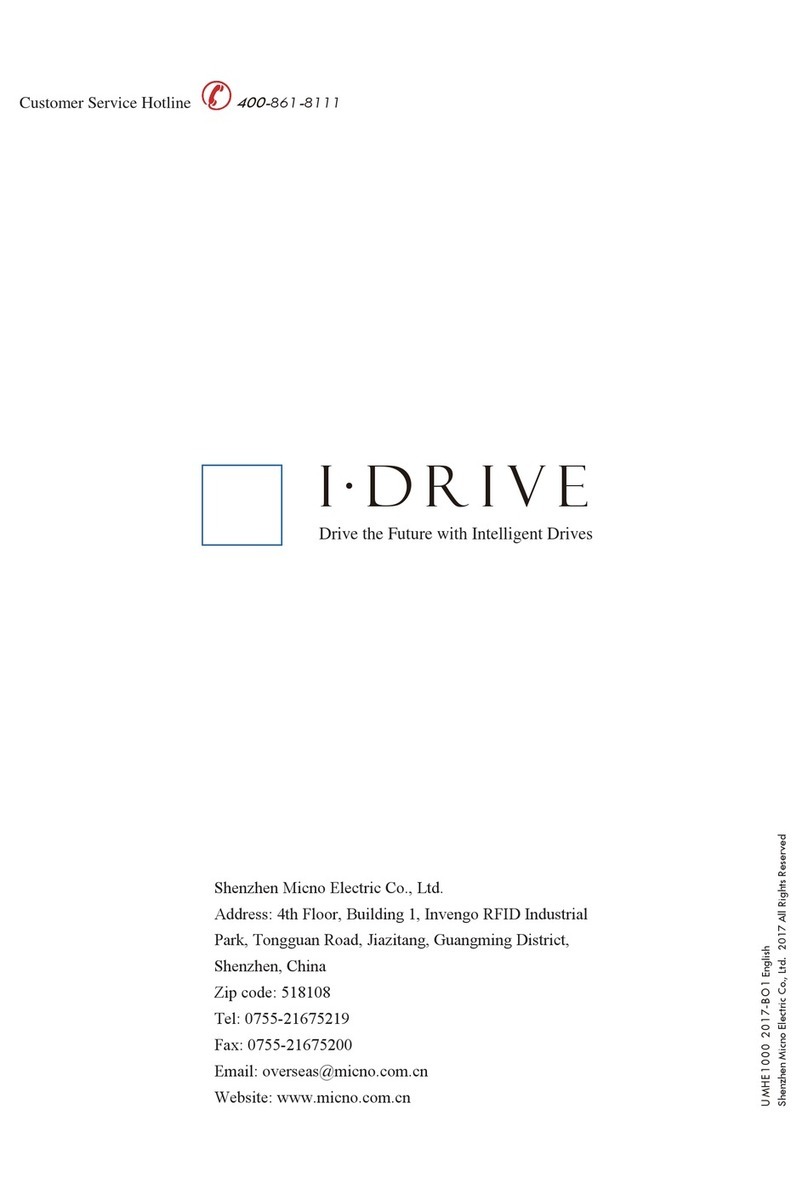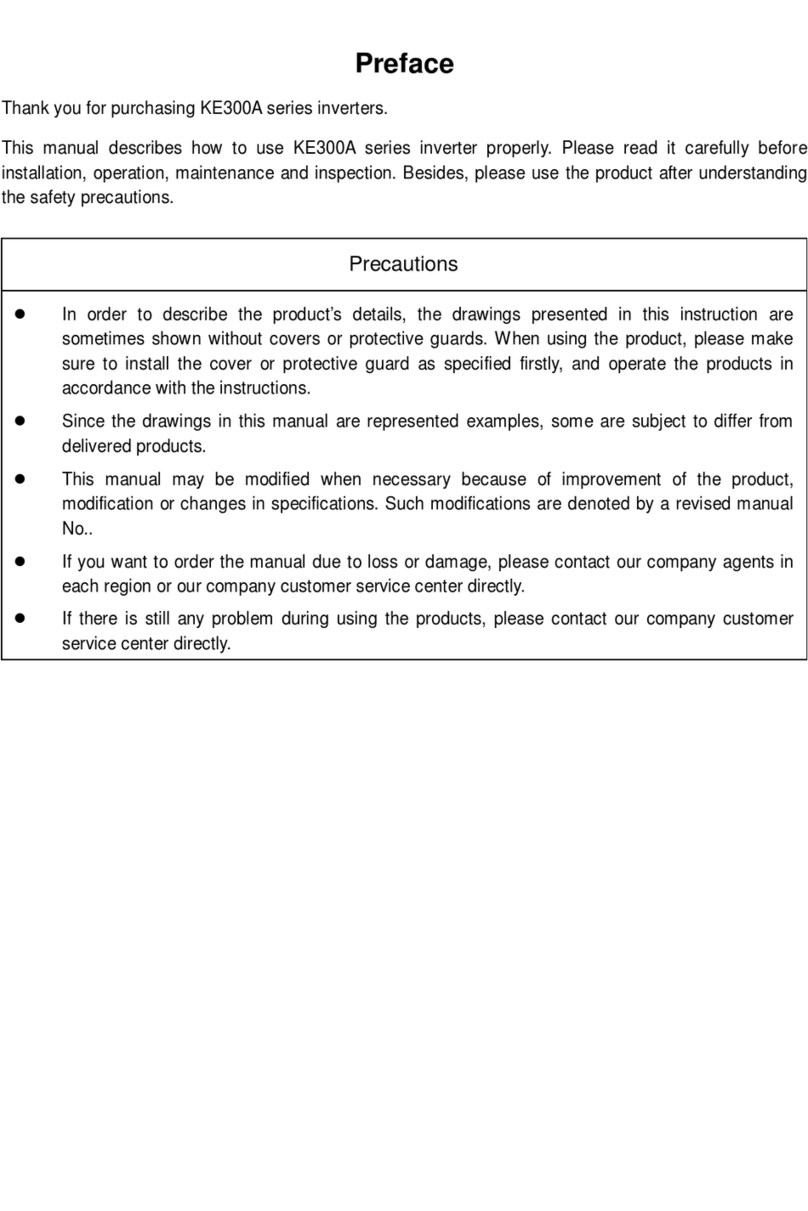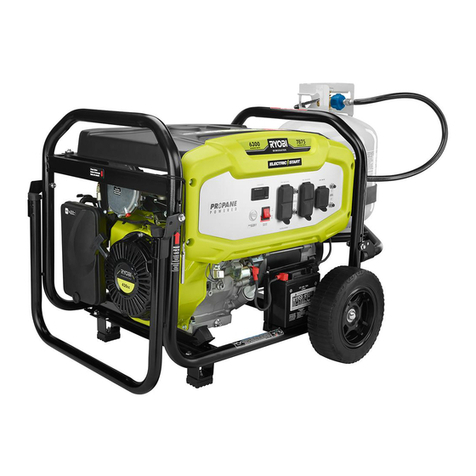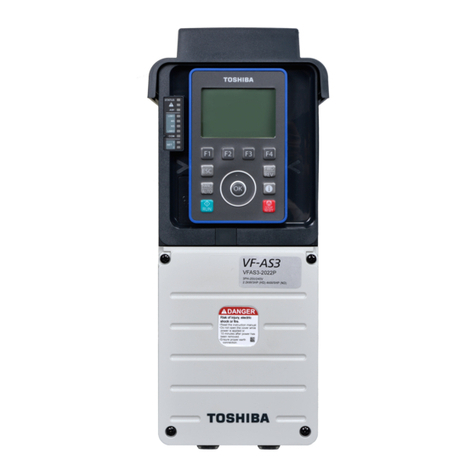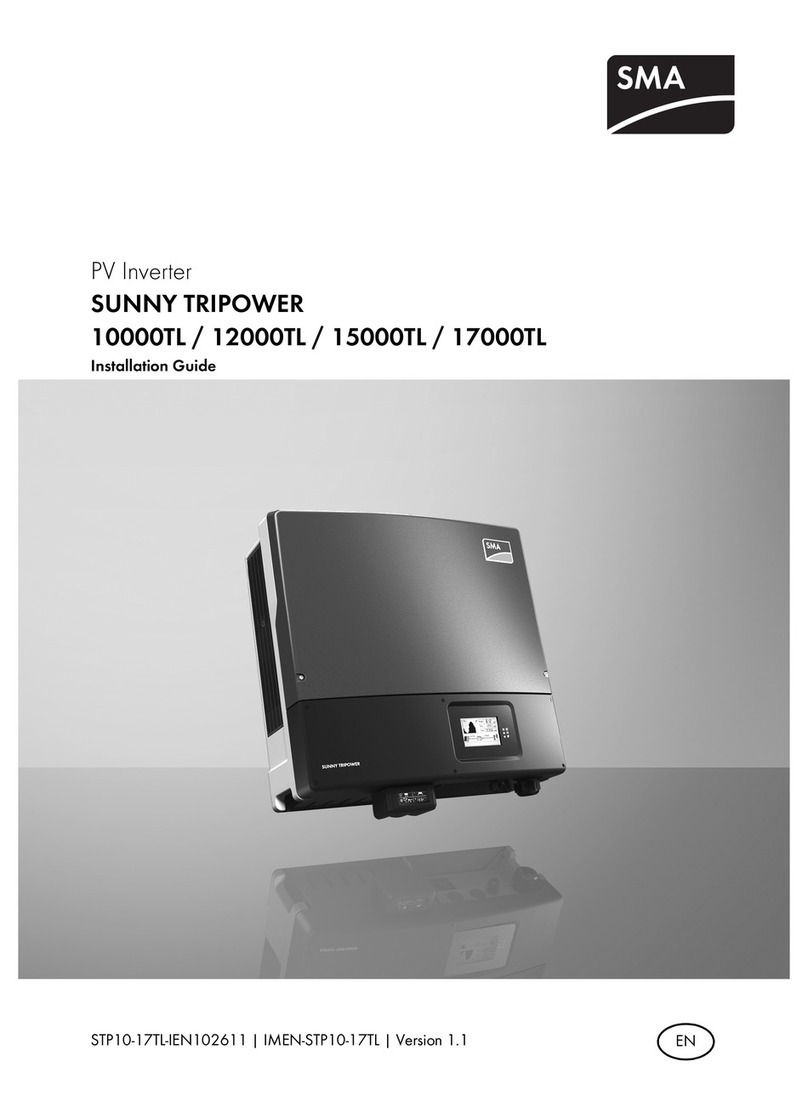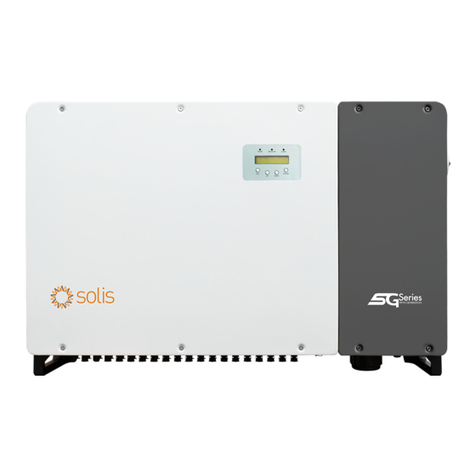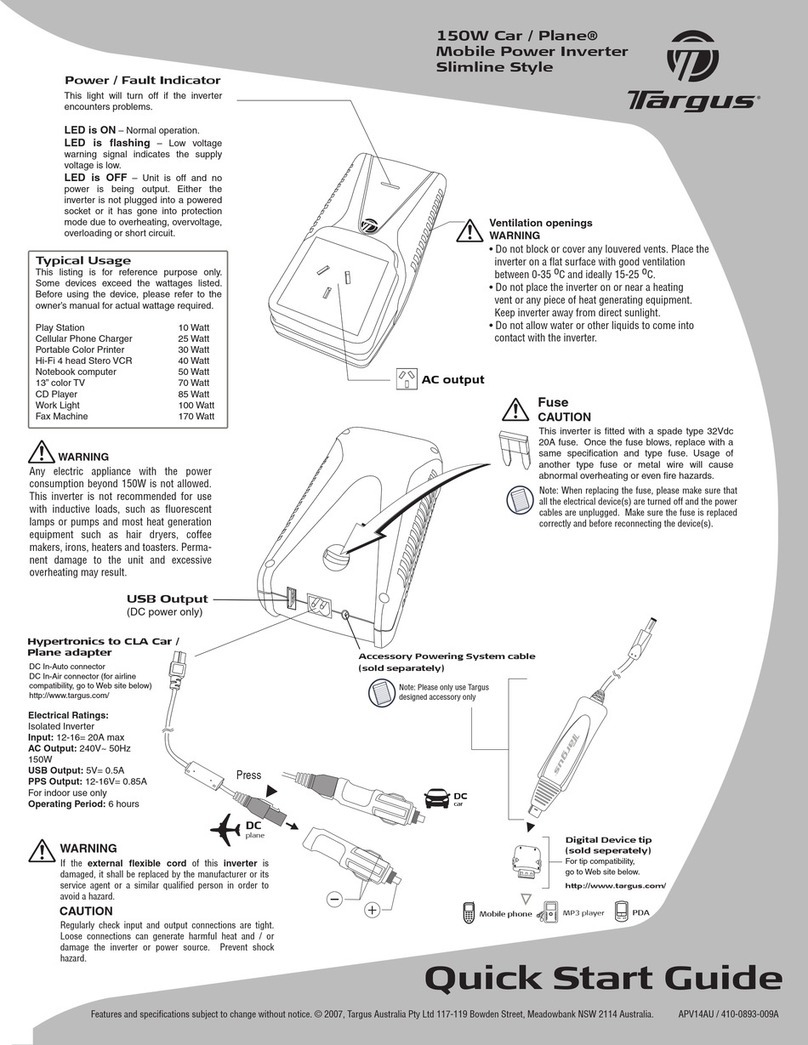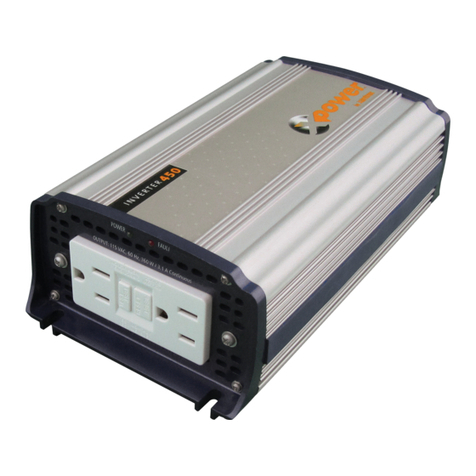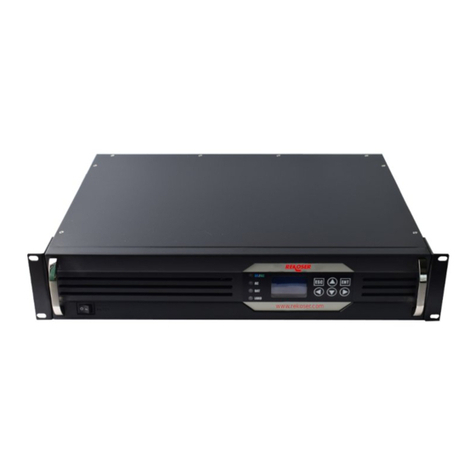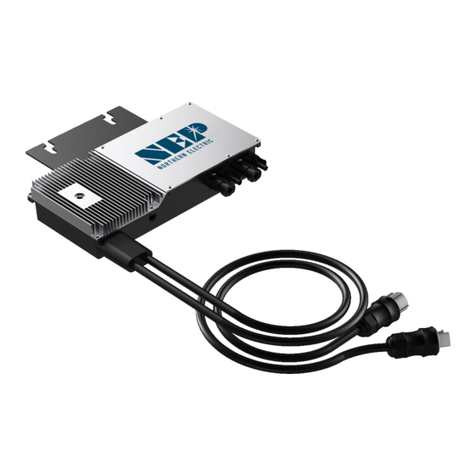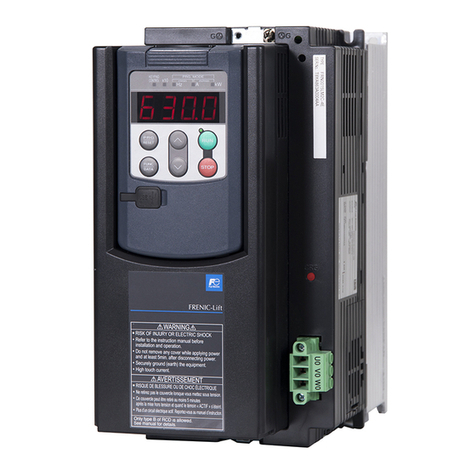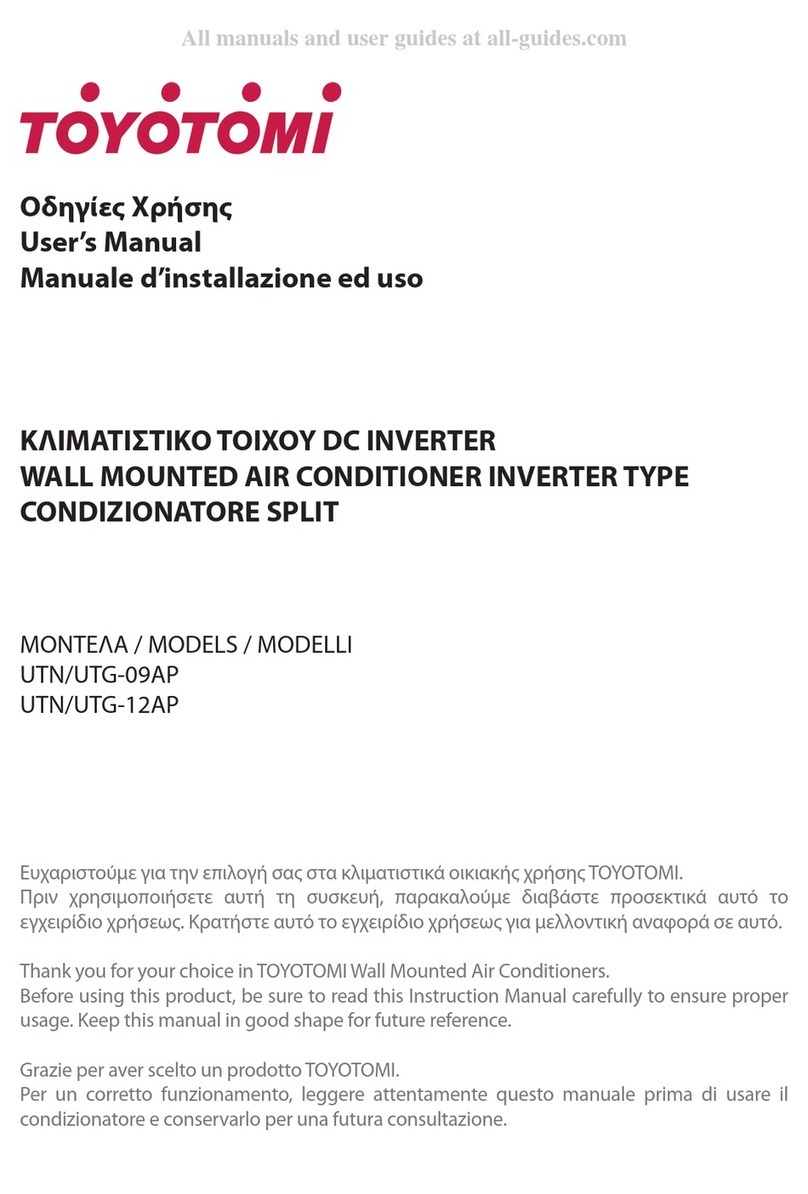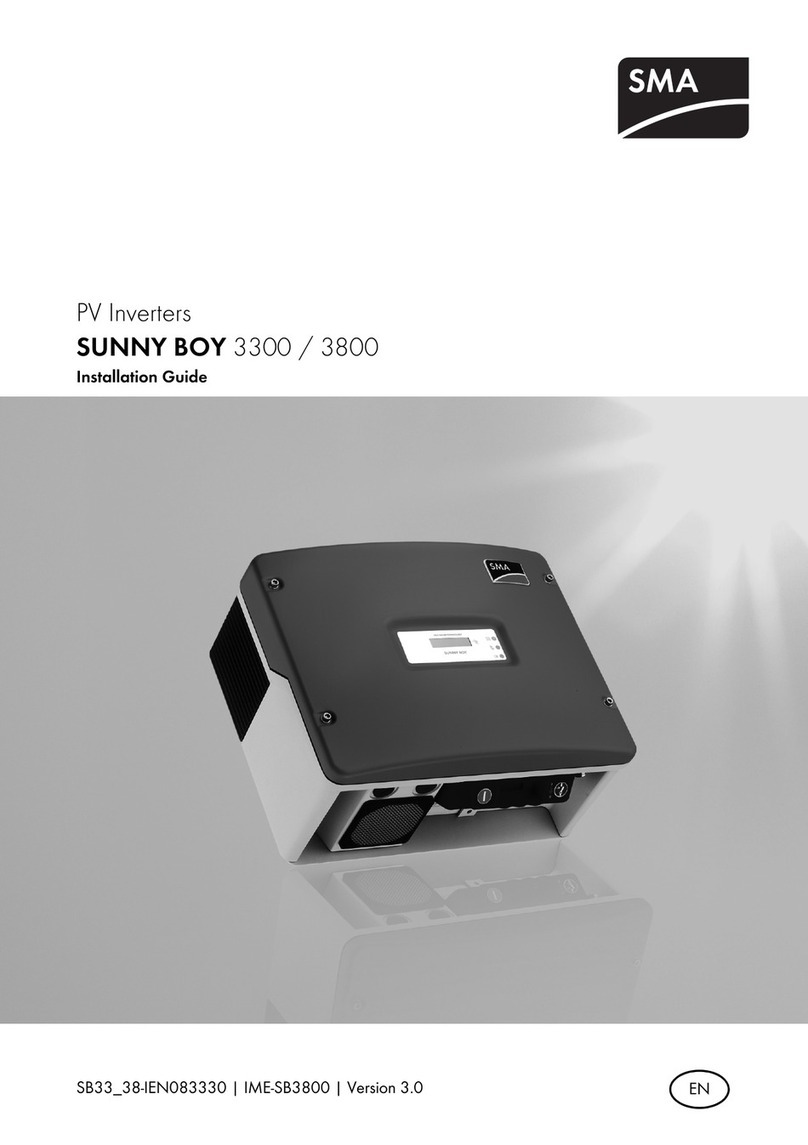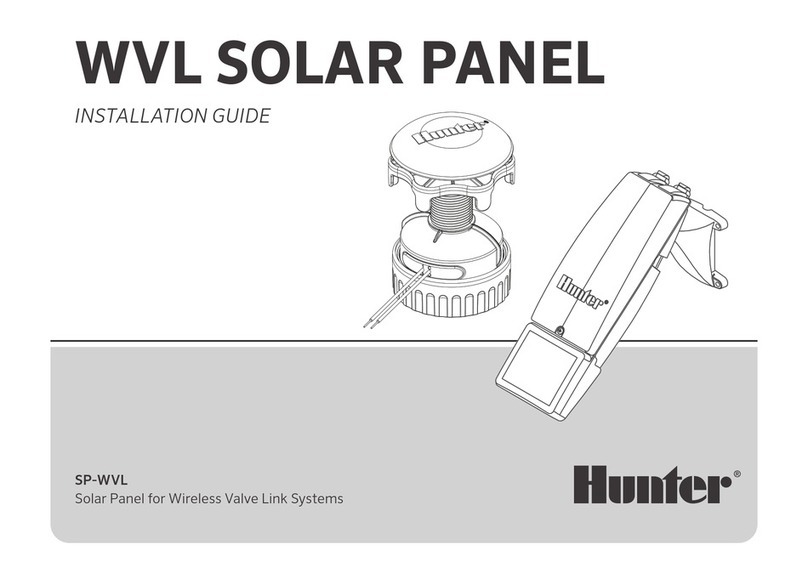Micno KE600 Series User manual

Preface
Thank you for purchasing KE600 series inverters.
This manual describes how to use KE600 series inverter properly. Please read it carefully before
installation, operation, maintenance and inspection. Besides, please use the product after understanding
the safety precautions.
Precautions
In order to describe the product’s details, the drawings presented in this instruction are
sometimes shown without covers or protective guards. When using the product, please make
sure to install the cover or protective guard as specified firstly, and operate the products in
accordance with the instructions.
Since the drawings in this manual are represented examples, some are subject to differ from
delivered products.
This manual may be modified when necessary because of improvement of the product,
modification or changes in specifications. Such modifications are denoted by a revised manual
No.
If you want to order the manual due to loss or damage, please contact our company agents in
each region or our company customer service center directly.
If there is still any problem during using the products, please contact our company customer
service center directly.

Contents
Chapter 1 Safety and Precautions............................................................................... 1
1.1 Safety Precautions............................................................................................ 1
1.2 Precautions....................................................................................................... 3
Chapter 2 Product Information .................................................................................... 6
2.1 Product Inspection............................................................................................ 6
2.2 Model Description............................................................................................. 6
2.3 Description of Nameplate.................................................................................. 6
2.4 Selection Guide................................................................................................. 7
2.5 Technical Specifications.................................................................................... 8
2.6 External & Installation Dimensions.................................................................. 10
2.7 Routine Maintenance of Inverter..................................................................... 21
2.8 Instructions on Warranty of Inverter................................................................ 22
Chapter 3 Mechanical and Electric Installation ........................................................ 23
3.1 Mechanical Installation.................................................................................... 23
3.2 Electrical Installation....................................................................................... 24
Chapter 4 Operation and Display............................................................................... 35
4.1 Keypad Description......................................................................................... 35
4.2 Function Code Checking and Modification Methods Description.................... 37
4.3 Power-on Initialization..................................................................................... 37
4.4 Fault Protection............................................................................................... 37
4.5 Stand By ......................................................................................................... 38
4.6 Running .......................................................................................................... 38
4.7 Password Setting............................................................................................ 38
4.8 Motor Parameters Autotuning ......................................................................... 38
Chapter 5 Function Parameter List............................................................................ 40
5.1 Basic Function Parameter Table..................................................................... 41
5.2 Monitoring Parameter Table ........................................................................... 68
Chapter 6 Parameter Description .............................................................................. 71
Group P0 Basic Function...................................................................................... 71
Group P1 Motor 1 Parameters.............................................................................. 81
Group P2 Vector Control Parameters ................................................................... 84
Group P3 V/F Control Parameters........................................................................ 87
Group P4 Input Terminal....................................................................................... 90
Group P5 Output Terminal .................................................................................. 101
Group P6 Start and Stop Control ........................................................................ 106
Group P7 Keypad and Display.............................................................................111

Group P8 Enhanced Function..............................................................................117
Group P9 Fault and Protection ........................................................................... 126
Group PA PID Function....................................................................................... 134
Group PB Wobble Frequency, Fixed Length, Counting ...................................... 140
Group PC Multi-step Command and Simple PLC Function ................................ 143
Group PD Communication Parameters............................................................... 148
Group PP Function Code Management.............................................................. 148
Group A0 Torque Control Parameters................................................................. 150
Group A2 Motor 2 Parameters............................................................................ 152
Group U0 Monitoring Parameters....................................................................... 158
Chapter 7 EMC (Electromagnetic Compatibility).................................................... 165
7.1 Definition....................................................................................................... 165
7.2 EMC Standard Description............................................................................ 165
7.3 EMC Guide ................................................................................................... 165
Chapter 8 Trouble Shooting..................................................................................... 168
8.1 Fault and Trouble Shooting........................................................................... 168
8.2 Common Faults and Solutions...................................................................... 175
Chapter 9 MODBUS Communication Protocol ....................................................... 176
9.1 About Protocol .............................................................................................. 176
9.2 Application Method........................................................................................ 176
9.3 Bus Structure ................................................................................................ 176
9.4 Protocol Description...................................................................................... 176
9.5 Communication Data Structure..................................................................... 177
9.6 Command Code and Communication Data Description................................ 177
9.7 PD Group Communication Parameter Description........................................ 184
Chapter 10 Extension Card ...................................................................................... 186
10.1 Injection Card.............................................................................................. 186
10.2 PG Card...................................................................................................... 187
10.3 I/O Extension Card...................................................................................... 189
10.4 Communication Extension Card.................................................................. 190

KE600 Inverter Safety and Precautions
1
Chapter 1 Safety and Precautions
Safety definition:
In this manual, safety precautions are classified as follows:
Danger: Operations which are not performed according to requirements may cause serious
equipment loss or personnel injury.
Caution: Operations which are not performed according to requirements may cause medium hurt or
light hurt or material loss.
During the installation, commissioning and maintenance of the system, please make sure to follow the
safety and precautions of this chapter. In case of a result of illegal operations, caused any harm and losses
is nothing to do with the company.
1.1 Safety Precautions
1.1.1 Before Installation:
Danger
Do not use the water-logged inverter, damaged inverter or inverter with missing
parts. Otherwise, there may be risk of injury.
Use the motor with Class B or above insulation. Otherwise, there may be risk of
electric shock.
Caution
Carefully handled when loading, otherwise it may damage the inverter.
Please don’t use the damaged driver or inverter with missing parts, there may be
risk of injury.
Do not touch the electronic parts and components; otherwise it will cause static
electricity.
1.1.2 During Installation:
Danger
Install the inverter on incombustible surface such as metal, and keep away from
flammable substances. Otherwise it may cause fire.
Do not loose the set screw of the equipment, especially the screws marked in RED.
Caution
Do not drop the cable residual or screw in the inverter. Otherwise it may damage
the inverter.
Please install the driver in the place where there is no direct sunlight or less
vibratory.
When more than two inverters are to be installed in one cabinet, due attention
should be paid to the installation locations (refer to Chapter 3 Mechanical and
Electrical Installation) to ensure the heat sinking effect.

KE600 Inverter Safety and Precautions
2
1.1.3 During Wiring:
Danger
Operation should be performed by the professional engineering technician.
Otherwise there will be danger of electric shock!
There should be circuit breaker between the inverter and power supply. Otherwise,
there may be fire!
Make sure the power is disconnected prior to the connection. Otherwise there will
be danger of electric shock!
The ground terminal should be earthed reliably. Otherwise there may be danger of
electric shock.
Caution
Never connect AC power to output UVW terminals. Please note the remark of the
wiring terminals, connect them correctly. Otherwise may cause inverter damaged.
Ensure the wiring circuit can meet the requirement of EMC and the area safety
standard. Please follow the instructions in the manual before wiring. Otherwise may
cause injury or electric shock.
Never connect the braking resistor between DC bus (+), (-) terminals. Otherwise
may cause fire.
Encoder must be used together with shielded wire, and ensure the single terminal
of the shielded lay is connected with ground well.
1.1.4 Before Power-on:
Danger
Please confirm whether the power voltage class is consistent with the rated voltage
of the inverter and whether the I/O cable connecting positions are correct, and
check whether the external circuit is short circuited and whether the connecting line
is firm. Otherwise it may damage the inverter. The cover must be well closed prior
to the inverter power-on. Otherwise electric shock may be caused.
The inverter is free from dielectric test because this test is performed prior to the
delivery. Otherwise accident may occur.
Caution
The cover must be well closed prior to the inverter power-on. Otherwise electric
shock may be caused!
Whether all the external fittings are connected correctly in accordance with the
circuit provided in this manual. Otherwise accident may occur!
1.1.5 After Power-on:
Danger
Do not open the cover of the inverter upon power-on. Otherwise there will be
danger of electric shock!
Do not touch the inverter and its surrounding circuit with wet hand. Otherwise there
will be danger of electric shock!
Do not touch the inverter terminals (including control terminal). Otherwise there will
be danger of electric shock!
At power-on, the inverter will perform the security check of the external
heavy-current circuit automatically. Thus, at the moment please do not touch the
terminals U, V and W, or the terminals of motor, otherwise there will be danger of
electric shock.

KE600 Inverter Safety and Precautions
3
Caution
If parameter identification is required, due attention should be paid to the danger of
injury arising from the rotating motor. Otherwise accident may occur!
Do not change the factory settings at will. Otherwise it may damage the equipment!
1.1.6 During Operation:
Danger
Do not touch the fan or discharge resistor to sense the temperature. Otherwise,
you may get burnt!
Detection of signals during the operation should only be conducted by qualified
technician. Otherwise, personal injury or equipment damage may be caused!
Caution
During the operation of the inverter, keep items from falling into the equipment.
Otherwise, it may damage the equipment!
Do not start and shut down the inverter by connecting and disconnecting the
contactor. Otherwise, it may damage the equipment!
1.1.7 During Maintain:
Danger
Do not repair and maintain the equipment with power connection. Otherwise there
will be danger of electric shock!
Be sure to conduct repair and maintenance after the charge LED indictor of the
inverter is OFF. Otherwise, the residual charge on the capacitor may cause
personal injury!
The inverter should be repaired and maintained only by the qualified person who
has received professional training. Otherwise, it may cause personal injury or
equipment damage!
Carry out parameter setting after replacing the inverter, all the plug-ins must be
plug and play when power outage.
1.2 Precautions
1.2.1 Motor Insulation Inspection
When the motor is used for the first time, or when the motor is reused after being kept, or when periodical
inspection is performed, it should conduct motor insulation inspection so as to avoid damaging the inverter
because of the insulation failure of the motor windings. The motor wires must be disconnected from the
inverter during the insulation inspection. It is recommended to use the 500V megameter, and the insulating
resistance measured should be at least 5MΩ.
1.2.2 Thermal Protection of the Motor
If the ratings of the motor does not match those of the inverter, especially when the rated power of the
inverter is higher than the rated power of the motor, the relevant motor protection parameters in the in the
inverter should be adjusted, or thermal relay should be mounted to protect the motor.
1.2.3 Running with Frequency higher than Standard Frequency
This inverter can provide output frequency of 0Hz to 3000Hz. If the user needs to run the inverter with
frequency of more than 50Hz, please take the resistant pressure of the mechanical devices into

KE600 Inverter Safety and Precautions
4
consideration.
1.2.4 Vibration of Mechanical Device
The inverter may encounter the mechanical resonance point at certain output frequencies, which can be
avoided by setting the skip frequency parameters in the inverter.
1.2.5 Motor Heat and Noise
Since the output voltage of inverter is PWM wave and contains certain harmonics, the temperature rise,
noise and vibration of the motor will be higher than those at power frequency.
1.2.6 Voltage-sensitive Device or Capacitor Improving Power Factor at the Output Side
Since the inverter output is PWM wave, if the capacitor for improving the power factor or voltage-sensitive
resistor for lightning protection is mounted at the output side, it is easy to cause instantaneous over current
in the inverter, which may damage the inverter. It is recommended that such devices not be used.
1.2.7 Switching Devices like Contactors Used at the Input and Output terminal
If a contactor is installed between the power supply and the input terminal of the inverter, it is not allowed to
use the contactor to control the startup/stop of the inverter. If such contactor is unavoidable, it should be
used with interval of at least one hour. Frequent charge and discharge will reduce the service life of the
capacitor inside the inverter. If switching devices like contactor are installed between the output end of the
inverter and the motor, it should ensure that the on/off operation is conducted when the inverter has no
output. Otherwise the modules in the inverter may be damaged.
1.2.8 Use under voltage rather than rated voltage
If the KE series inverter is used outside the allowable working voltage range as specified in this manual, it
is easy to damage the devices in the inverter. When necessary, use the corresponding step-up or
step-down instruments to change the voltage.
1.2.9 Change Three-phase Input to Two-phase Input
It is not allowed to change the KE series three-phase inverter into two-phase one. Otherwise, it may cause
fault or damage to the inverter.
1.2.10 Lightning Impulse Protection
The series inverter has lightning over current protection device, and has certain self-protection capacity
against the lightning. In applications where lightning occurs frequently, the user should install additional
protection devices at the front-end of the inverter.
1.2.11 Altitude and Derating
In areas with altitude of more than 1,000 meters, the heat sinking effect of the inverter may turn poorer due
to rare air. Therefore, it needs to derate the inverter for use. Please contact our company for technical
consulting in case of such condition.

KE600 Inverter Safety and Precautions
5
1.2.12 Certain Special Use
If the user needs to use the inverter with the methods other than the recommended wiring diagram in this
manual, such as shared DC bus, please consult our company.
1.2.13 Note of Inverter Disposal
The electrolytic capacitors on the main circuit and the PCB may explode when they are burnt. Emission of
toxic gas may be generated when the plastic parts are burnt. Please dispose the inverter as industrial
wastes.
1.2.14 Adaptable Motor
1) The standard adaptable motor is four-pole squirrel-cage asynchronous induction motor. If such motor is
not available, be sure to select adaptable motors in according to the rated current of the motor. In
applications where drive permanent magnetic synchronous motor is required, please consult our company;
2) The cooling fan and the rotor shaft of the non-variable-frequency motor adopt coaxial connection. When
the rotating speed is reduced, the cooling effect will be poorer. Therefore, a powerful exhaust fan should be
installed, or the motor should be replaced with variable frequency motor to avoid the over heat of the
motor.
3) Since the inverter has built-in standard parameters of the adaptable motors, it is necessary to perform
motor parameter identification or modify the default values so as to comply with the actual values as much
as possible, or it may affect the running effect and protection performance;
4) The short circuit of the cable or motor may cause alarm or explosion of the inverter. Therefore, please
conduct insulation and short circuit test on the newly installed motor and cable. Such test should also be
conducted during routine maintenance. Please note that the inverter and the test part should be completely
disconnected during the test.

KE600 Inverter Product Information
6
Chapter 2 Product Information
2.1 Product Inspection
Checking the following items when receiving the inverter
Confirmation Items
Method
Confirm if the inverter is what you ordered
Check name plate
Damaged or not
Inspect the entire exterior of the inverter to see if
there are any scratches or other damage
resulting from shipping
Confirm if the fastening parts (screws, etc.)
are loose or not
Check with a screw driver if necessary
User’s manual, certification and other spares
User’s manual and the relative spares
Please contact the local agent or our company directly if there is any damage on the inverter.
2.2 Model Description
KE600 - 5R5G - T4
Close-loop vector
control inverter series
Power rating:
5R5: 5.5kW
G: Constant torque type
Input voltage:
S2: 1AC 220~240V
T2: 3AC 220~240V
T4: 3AC 380~440V
T6: 3AC 660~690V
Figure 2-1 Model description
2.3 Description of Nameplate
Figure 2-2 Nameplate
Model No.
Power rating
Input specification
Output specification
Bar code

KE600 Inverter Product Information
7
2.4 Selection Guide
Table 2-1 KE600 Series Inverter Model and Technical Data
Inverter Model
Motor
Rated Input
Current (A)
Rated Output
Current (A)
kW
HP
3AC 220~240V±15%
KE600-1R5G-T2
1.5
2
7.7
7
KE600-2R2G-T2
2.2
3
10.5
9
KE600-004G-T2
4.0
5
14.6
13
KE600-5R5G-T2
5.5
7.5
26
25
KE600-7R5G-T2
7.5
10
35
32
KE600-011G-T2
11
15
46.5
45
KE600-015G-T2
15
20
62.5
60
KE600-018G-T2
18.5
25
76
75
KE600-022G-T2
22
30
92
91
KE600-030G-T2
30
40
113
112
KE600-037G-T2
37
50
157
150
KE600-045G-T2
45
60
180
176
KE600-055G-T2
55
75
214
210
KE600-075G-T2
75
100
307
304
3AC 380~440V±15%
KE600-1R5G-T4
1.5
2
5.0
3.8
KE600-2R2G-T4
2.2
3
6.8
6.0
KE600-004G-T4
4.
5
10
9
KE600-5R5G-T4
5.5
7.5
15
13
KE600-7R5G-T4
7.5
10
20
17
KE600-011G-T4
11
15
26
25
KE600-015G-T4
15
20
35
32
KE600-018G-T4
18.5
25
38
37
KE600-022G-T4
22
30
46
45
KE600-030G-T4
30
40
62
60
KE600-037G-T4
37
50
76
75
KE600-045G-T4
45
60
92
90
KE600-055G-T4
55
75
112
110
KE600-075G-T4
75
100
157
150
KE600-090G-T4
90
125
180
176
KE600-110G-T4
110
150
214
210
KE600-132G-T4
132
175
256
253
KE600-160G-T4
160
210
307
304
KE600-185G-T4
185
250
350
340
KE600-200G-T4
200
260
385
377
KE600-220G-T4
220
300
430
423
KE600-250G-T4
250
330
468
465
KE600-280G-T4
280
370
525
520
KE600-315G-T4
315
420
590
585
KE600-350G-T4
350
470
665
650

KE600 Inverter Product Information
8
KE600-400G-T4
400
530
785
725
KE600-500G-T4
500
660
880
860
KE600-560G-T4
560
750
980
950
KE600-630G-T4
630
840
1130
1100
3AC 660~690V±15%
KE600-015G-T6
15
20
21
19
KE600-018G-T6
18
25
28
22
KE600-022G-T6
22
30
35
28
KE600-030G-T6
37
40
40
35
KE600-037G-T6
37
50
47
45
KE600-045G-T6
45
60
55
52
KE600-055G-T6
55
75
65
63
KE600-075G-T6
75
100
90
86
KE600-090G-T6
90
105
100
98
KE600-110G-T6
110
130
130
121
KE600-132G-T6
132
175
170
150
KE600-160G-T6
160
210
200
175
KE600-185G-T6
185
250
210
195
KE600-200G-T6
200
260
235
215
KE600-220G-T6
220
300
257
245
KE600-250G-T6
250
330
265
260
KE600-280G-T6
280
370
305
300
KE600-315G-T6
315
420
350
330
KE600-350G-T6
350
470
382
374
KE600-400G-T6
400
530
435
410
KE600-450G-T6
450
600
490
465
KE600-500G-T6
500
660
595
550
KE600-630G-T6
630
840
700
680
2.5 Technical Specifications
Table 2-2 KE600 Series Inverter Technical Specifications
Item
Technical Index
Specification
Input
Input voltage
3AC 220~240V±15%, 3AC 380~440V±15%, 3AC 660~690V±15%
Input frequency
47~63Hz
Output
Output voltage
0~rated input voltage
Output frequency
V/f control: 0~3000Hz
Sensorless vector control: 0~300Hz
Control
Features
Control mode
V/f control
Sensorless vector control (Open-loop)
Close-loop vector control
Torque control
Operation command
mode
Keypad control
Terminal control
Serial communication control

KE600 Inverter Product Information
9
Frequency setting
mode
Digital setting, analog setting, pulse frequency setting, serial
communication setting, multi-step speed setting & simple PLC, PID
setting, etc. These frequency settings can be combined & switched in
various modes.
Overload capacity
150% 60s, 180% 10s, 200% 3s.
Starting torque
0Hz/180% (Close-loop vector control);
0.5Hz/150% (SVC);
1Hz/150% (V/f)
Speed adjustment
range
1:1000 (Close-loop vector control);
1:100 (SVC),
1:50 (V/f)
Speed control
precision
±0.02% (Close-loop vector control); ±0.5% (SVC)
Carrier frequency
1.0--16.0kHz, automatically adjusted according to temperature and
load characteristics
Frequency accuracy
Digital setting: 0.01Hz
Analog setting: maximum frequency ×0.05%
Torque boost
Automatically torque boost; manually torque boost: 0.1%~30.0%
V/f curve
Three types: linear, multiple point and square type (1.2 power, 1.4
power, 1.6 power, 1.8 power, square)
Acceleration/decele
ration mode
Straight line/S curve; four kinds of acceleration/deceleration time,
range: 0.1s~3600.0s
DC braking
DC braking when starting and stopping
DC braking frequency: 0.0Hz~maximum frequency, braking time:
0.0s~100.0s
Jog operation
Jog operation frequency: 0.0Hz~maximum frequency
Jog acceleration/deceleration time: 0.1s~3600.0s
Simple PLC &
multi-step speed
operation
It can realize a maximum of 16 segments speed running via the built-in
PLC or control terminal.
Built-in PID
Built-in PID control to easily realize the close loop control of the
process parameters (such as pressure, temperature, flow, etc.)
Automatic voltage
regulation
Keep output voltage constant automatically when input voltage
fluctuating
Control
Function
Common DC bus
Common DC bus for several inverters, energy balanced automatically
Torque control
Torque control build-in
Torque limit
“Rooter” characteristics, limit the torque automatically and prevent
frequent over-current tripping during the running process
Wobble frequency
control
Multiple triangular-wave frequency control, special for textile
Timing/length/
counting control
Timing/length/counting control function
Over-voltage &
over-current stall
control
Limit current & voltage automatically during the running process,
prevent frequent over-current & over-voltage tripping

KE600 Inverter Product Information
10
Fault protection
function
Up to 30 fault protections including over-current, over-voltage,
under-voltage, overheating, default phase, overload, shortcut, etc., can
record the detailed running status during failure & has fault automatic
reset function
Input/out
put
terminals
Input terminals
Programmable DI (Digital Input):
7 inputs, 1 is optional for high-speed pulse input,
3 can be extended
Programmable AI (Analog Input):
AI1: 0~10V or 0/4~20mA
A12: 0~10V or 0/4~20mA
Output terminals
1 programmable open collector output: 1 analog output (open collector
output or high-speed pulse output), 2 can be extended.
1 relay output, 1 can be extended
2 analog output: 0/4~20mA or 0~10V
Communication
terminals
Offer RS485 communication interface, support MODBUS-RTU
communication protocol
Human
machine
interface
LED display
Display frequency setting, output frequency, output voltage, output
current, etc.
Multifunction key
QUICK/JOG key, can be used as multifunction key
Environ-
ment
Ambient
temperature
-10℃~40℃, derated 4% when the temperature rise by every 1℃
(40℃~50℃).
Humidity
90%RH or less (non-condensing)
Altitude
≤1000M: output rated power, >1000M: output derated
Storage
temperature
-20℃~60℃
2.6 External & Installation Dimensions
2.6.1 Parts Description
Operation keypad
Cover installation hole
Cables crossing
Inverter mounting hole

KE600 Inverter Product Information
11
Figure 2-3 Parts of inverter
Inverter
hoisting hole
Inverter
mounting hole
Keypad bracket
Control board
Main circuit wiring
When installing a
cabinet, can outlet
front, back, left
and right

KE600 Inverter Product Information
12
2.6.2 External & Installation Dimensions
3AC 220~240V inverter dimension
5 0 .0 0
A
W
B
H
D
1.5~4kW
W
H1
D
A
B
H2
5.5~15kW

KE600 Inverter Product Information
13
W
A
H1
B
H2
D
18.5~75kW
Power
Range
External Dimension
( mm )
Installation Dimension
( mm )
Mounting
Bolt Model
W
H1
H2
D
A
B
1.5~4kW
135
240
173
122.6
229
M4
5.5kW
170
314
285
167
90
301.6
M4
7.5kW
200
329.1
300
177.2
90
316.6
M4
11~15kW
255
439.6
402.4
209.6
140
423.6
M5
18.5~22kW
280
570
521.2
258
190
552
M6
30~37kW
320
600
552
330
230
582
M8
45~55kW
320
715
662
330
230
695.5
M8
75kW
480
790
725
385
360
768
M10
3AC 380~440V inverter dimension
5 0 .0 0
A
W
B
H
D
1.5~5.5kW

KE600 Inverter Product Information
14
W
H1
D
A
B
H2
7.5~30kW
W
A
H1
B
H2
D
37~200kW (including 90~200kW standard inverter (without base))

KE600 Inverter Product Information
15
50.00
W
H2
H1
D
90~200kW nonstandard inverter (with base)
Power
Range
External Dimension
( mm )
Installation Dimension
( mm )
Mounting
Bolt Model
W
H1
H2
D
A
B
1.5~5.5kW
135
240
173
122.6
229
M4
7.5kW
170
314
285
167
90
301.6
M4
11~15kW
200
329.1
300
177.2
90
316.6
M4
18.5kW
225
397.6
365
185.2
120
384.1
M5
22~30kW
255
439.6
402.4
209.6
140
423.6
M5
37~45kW
280
570
521.2
258
190
552
M6
55~75kW
320
600
552
330
230
582
M8
90~110kW
(without base)
320
715
662
330
230
695.5
M8
90~110kW
(with base)
320
992
962
330
132~200kW
(without base)
480
790
725
385
360
768
M10
132~200kW
(with base)
480
1165
1125
385
Note: Base is optional for 90~200kW inverters. Standard invertes are without base.

KE600 Inverter Product Information
16
D
A2
A1
W
H1
B
H2
220~630kW without base
W
H1
D
H2
220~630kW with base

KE600 Inverter Product Information
17
Power
Range
External Dimension
( mm )
Installation Dimension
( mm )
Mounting
Bolt Model
W
H1
H2
D
A1
A2
B
220~315kW
(without base)
700
970
900
408
160
480
946
M10
220~315kW
(with base)
700
1390
1350
408
350~630kW
(without base)
940
1140
1100
458
240
660
1146
M10
350~630kW
(with base)
940
1690
1650
458
3AC 660~690V Inverter Dimension
W
A
H1
B
H2
D
15~160kW (without base)
This manual suits for next models
66
Table of contents
Other Micno Inverter manuals
Popular Inverter manuals by other brands
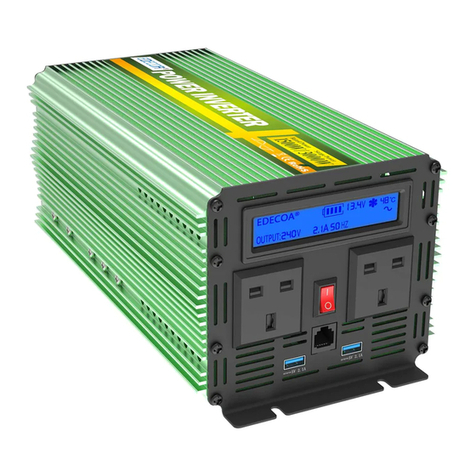
EDECOA
EDECOA DPM10 user manual
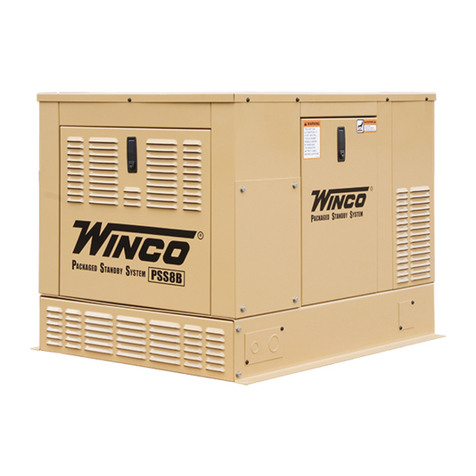
Winco
Winco PSS8000 Installation and operator's manual

EINHELL
EINHELL BT-PG 4000 Original operating instructions

Parkside
Parkside PSE 2800 B2 original operation manual

Daihen
Daihen OTC CPTX-I 400 2W owner's manual

Mitsubishi Electric
Mitsubishi Electric FR-F800 instruction manual
